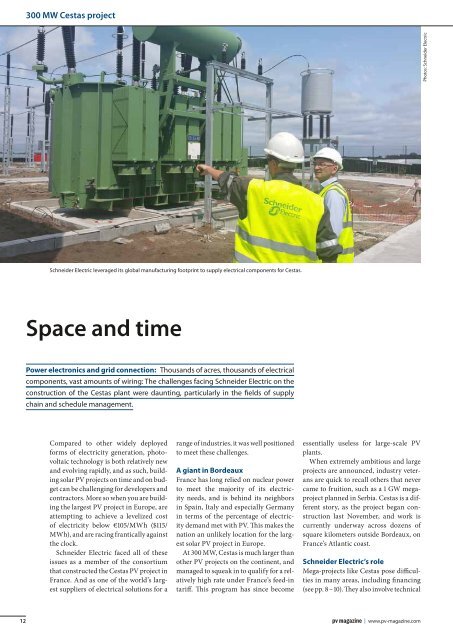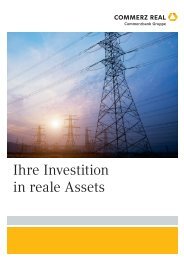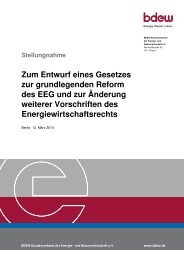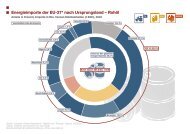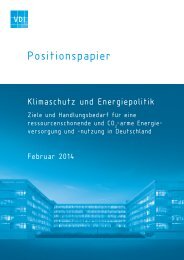Inside Cestas
1Zl7QBV
1Zl7QBV
You also want an ePaper? Increase the reach of your titles
YUMPU automatically turns print PDFs into web optimized ePapers that Google loves.
300 MW <strong>Cestas</strong> project 300 MW <strong>Cestas</strong> project<br />
Photos: Schneider Electric<br />
Schneider Electric leveraged its global manufacturing footprint to supply electrical components for <strong>Cestas</strong>.<br />
Space and time<br />
Power electronics and grid connection: Thousands of acres, thousands of electrical<br />
components, vast amounts of wiring: The challenges facing Schneider Electric on the<br />
construction of the <strong>Cestas</strong> plant were daunting, particularly in the fields of supply<br />
chain and schedule management.<br />
Compared to other widely deployed<br />
forms of electricity generation, photovoltaic<br />
technology is both relatively new<br />
and evolving rapidly, and as such, building<br />
solar PV projects on time and on budget<br />
can be challenging for developers and<br />
contractors. More so when you are building<br />
the largest PV project in Europe, are<br />
attempting to achieve a levelized cost<br />
of electricity below €105/MWh ($115/<br />
MWh), and are racing frantically against<br />
the clock.<br />
Schneider Electric faced all of these<br />
issues as a member of the consortium<br />
that constructed the <strong>Cestas</strong> PV project in<br />
France. And as one of the world’s largest<br />
suppliers of electrical solutions for a<br />
range of industries, it was well positioned<br />
to meet these challenges.<br />
A giant in Bordeaux<br />
France has long relied on nuclear power<br />
to meet the majority of its electricity<br />
needs, and is behind its neighbors<br />
in Spain, Italy and especially Germany<br />
in terms of the percentage of electricity<br />
demand met with PV. This makes the<br />
nation an unlikely location for the largest<br />
solar PV project in Europe.<br />
At 300 MW, <strong>Cestas</strong> is much larger than<br />
other PV projects on the continent, and<br />
managed to squeak in to qualify for a relatively<br />
high rate under France’s feed-in<br />
tariff. This program has since become<br />
essentially useless for large-scale PV<br />
plants.<br />
When extremely ambitious and large<br />
projects are announced, industry veterans<br />
are quick to recall others that never<br />
came to fruition, such as a 1 GW megaproject<br />
planned in Serbia. <strong>Cestas</strong> is a different<br />
story, as the project began construction<br />
last November, and work is<br />
currently underway across dozens of<br />
square kilometers outside Bordeaux, on<br />
France’s Atlantic coast.<br />
Schneider Electric’s role<br />
Mega-projects like <strong>Cestas</strong> pose difficulties<br />
in many areas, including financing<br />
(see pp. 8 – 10). They also involve technical<br />
and logistical trials, many of which were<br />
borne by Schneider Electric, along with<br />
its partners in the consortium including<br />
EPC Eiffage and mounting systems supplier<br />
Krinner.<br />
The company’s role covered managing<br />
energy “from the solar panels to the highvoltage<br />
grid.” This includes not only supplying<br />
the hardware and software solutions,<br />
but also performing operations and<br />
maintenance services along with its partners.<br />
Components supplied by Schneider<br />
Electric include 200 of its PV Box RT<br />
units, each of which houses two Conext<br />
Core XC 680 inverters, including its Conext<br />
Control monitoring solution.<br />
The project features two notable technical<br />
details. First, it is connected directly<br />
to a 225 kV transmission line, for which<br />
Schneider Electric is building a substation.<br />
Second, it utilizes PV modules<br />
mounted in east and west-facing orientations,<br />
which broadens the plant’s output<br />
over a 24 hour period.<br />
Scale, money and time<br />
The scale of <strong>Cestas</strong> brings up the question<br />
of how different it is to supply components<br />
to a project of this size. Ultimately,<br />
many of the challenges are the same, only<br />
on a larger scale. This is especially true for<br />
<strong>Cestas</strong>, which consists of 25 individual<br />
plants, each 20 MW in capacity, spread<br />
across the fields and forests between the<br />
Garonne River and Arcachon Bay in the<br />
Aquitaine region.<br />
Schneider Electric’s challenge was not<br />
only scale, but scale and timing as well.<br />
France’s feed-in tariff contains a penalty<br />
for late construction that can impact the<br />
financial viability of projects. For every<br />
month that a project is completed after a<br />
certain date, the term of the feed-in tariff<br />
is shortened by three months.<br />
“It means that if you connect your project<br />
three months after the time of the<br />
contract, then you lose nine months of<br />
feed-in tariff,” explains Schneider Electric<br />
Director of Solar Power Generation &<br />
Energy Storage for Western Europe and<br />
Northwest Africa, Ignace de Prest. This<br />
deadline is so sharp that few projects end<br />
up qualifying for the full 20 years of the<br />
feed-in tariff.<br />
De Prest also notes that the complexity<br />
of the project translated to lengthy<br />
negotiations between consortium members<br />
and sub-contractors, which intensified<br />
the time pressures. As if this were<br />
not enough, there is the added dimension<br />
of cost. While the feed-in tariff of €105/<br />
MWh is much higher than is currently<br />
offered, it is a disconcertingly low level<br />
for the successful completion of a solar<br />
PV project in Europe.<br />
Global manufacturing, supply<br />
chain mastery<br />
In its role as supplier, Schneider Electric<br />
leveraged its global manufacturing, with<br />
its Conext Core inverters made at a factory<br />
in India, and the RT boxes assembled<br />
and integrated in Spain. “There were<br />
challenges in the fact that the construction<br />
is very quick,” notes de Prest. “We<br />
were delivering more than eight PV boxes<br />
per week for several months.”<br />
High-volume delivery of product manufactured<br />
on several continents can be<br />
inherently tricky. “The standard nature<br />
of our components, the mastering of<br />
global supply chain, and synergies with<br />
other partners of Schneider Electric for<br />
procurement of components and so on<br />
– the fact that we have a very competitive<br />
cost of manufacturing, scale effects –<br />
that’s all related to the competitiveness of<br />
the project,” explains de Prest. “The tariff<br />
is low and there was a lot of competition<br />
for this project.”<br />
12<br />
| www.pv-magazine.com | www.pv-magazine.com<br />
13


